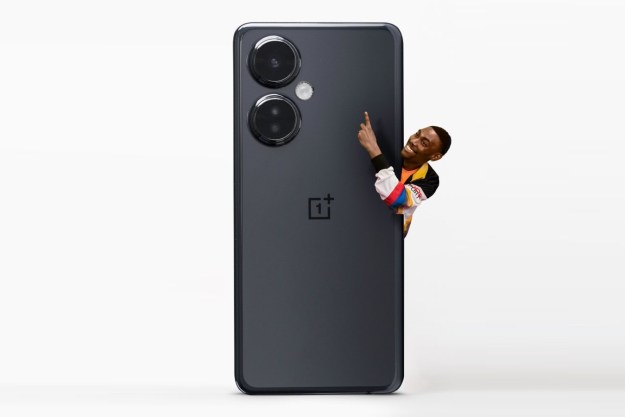There’s a lot of reasons to love Motorola.
Yes, we have a flashy new form-factor in the newly-launched Moto Razr foldable phone – we’re waiting with bated breath for that – but don’t forget that for years, Moto has built the best inexpensive smartphones for the U.S. market.
It’s not the most glamorous job, but Moto’s done it faithfully. Adding to its lauded G series, the Moto G Power and Moto G Stylus bring much-wanted perks like multi-day battery life and powerful cameras. Best of all, they’ll set you back just $250 and $300, respectively.
Design and display
The Moto G Power and Moto G Stylus both sport 6.4-inch FHD+ (2,300 x 1,080 px) displays with a 19:9 aspect ratio and small hole-punch cutouts for the 16MP front-facing camera. You’re not going to see curved edges on screens at this price point, but the bezels are thin, and the display looks crisp and sharp.
Moto’s always made LCDs in this category pop more than others we’ve seen in the past, like the LG Stylo 5, but the screens on these phones aren’t as punchy and saturated as Samsung’s A50.
The big differentiator here is, of course, the included Stylus on the Moto G Stylus. It’s not Bluetooth connected like Samsung’s S Pen, but meant for more precision, creativity, and the option to take hand-written notes, similar to the LG Stylo.

Pulling the stylus out when the screen’s off will jump you directly into a notepad on the lock screen to jot down quick notes. Take it out when the screen’s on and you’ll see a small, customizable menu of apps and shortcuts, including a screenshot function for capturing and marking up your phone’s screen.
Both phones have dual speakers for a stereo audio experience. I couldn’t listen carefully in my time with the phone, but they seem to be what I’d expect for the price. Not great, but good enough for most situations.
Triple cameras on both, but details differ
Cameras also set the Moto G Power and G Stylus apart. The Moto G Power goes with a 16MP regular camera, 8MP ultra-wide-angle cam for wider shots, and a 2MP macro lens that can zoom five times closer, capturing fine close-up details and small subjects. This setup works much as you’d expect.
The Moto G Stylus, on the other hand, bumps up the hardware to a 48MP main camera and a 16MP ultra-wide, with the same 2MP macro camera.
You just don’t find 48MP cameras on $300 phones, so it’s refreshing. But the G Stylus also makes a strange choice. The ultra-wide camera on the G Stylus can’t take photos. Instead, it’s used for a feature called Action Camera.

The Action Camera mode lets you capture video with the phone held upright (as you normally hold a phone), and then flips the resulting video horizontally. It works exactly as it should, preventing users from recording vertical video without having to turn the phone. It doesn’t do this by default, however, as you’ll need to enable this mode. It’s a small, but nifty feature that can be handy for one-handed use.
But remember. The Action Camera feature bars the 16MP ultra-wide from photos. The more expensive G Stylus lacks an important camera feature the G Power has. It’s an odd trade-off.
Both phones have UI staples like a dedicated night mode called Night Vision, and a portrait mode for bokeh shots. Moto has a few unique options, like spot color mode, which lets you choose a color to remove or isolate in shots, leaving the rest black and white. The Cinemagraph mode can create GIFs with only a select part of the photo moving.
Despite the difference in hardware, it’s hard to see an immediate difference between photos taken on each phone. Zoom in a bit, though, and the superior detail capture of the G Stylus’ 48MP shooter becomes apparent. The G Stylus also has laser autofocus, which makes for sharper details in many shots.
Otherwise, shots are fine to share on your social media networks or a quick snap with friends. Unfortunately, there wasn’t anywhere dark enough to test Night Vision, so we’ll have to give that a go in the full review.
Performance, Battery Life, and Moto Experiences
The hardware in these phones is mostly the same, with a few small differences. Both run a Qualcomm’s Snapdragon 665 mid-range processor paired with 4GB RAM. The G Power only has 64GB of storage (with room to expand via MicroSD card) but the Stylus, maintaining its superiority, has 128GB with the option to expand externally. This is on par with and, in the case of the 128GB storage on the G Stylus, slightly above what we see in this price range.

Flicking around the Android 10 OS on these phones doesn’t show obvious impediments, and most users should be adequately powered for smooth day-to-day tasks. Gaming on devices with this hardware naturally won’t be silky-smooth in the most demanding mobile games.
To combat that, Moto added a game mode called Moto Game Time to decrease interruptions and increase performance. I wasn’t able to test it during my hands-on, however, as Motorola didn’t install games on the demo phones.
The best hardware perk is the claimed multi-day battery life. Motorola says the Moto G Power should clock three full days of battery on its 5000mAh battery, while the Moto G Stylus can last two days on its 4000mAh battery. These are impressive figures for budget phones.
You’ll find batteries this size in phones like Asus’ mid-range Zenfone Max, and the lower-high-end Zenfone 6, but neither achieves three days of actual use. If Moto can deliver, it will be a big deal for prospective owners.
Price and availability
Unfortunately, there’s no launch date yet. The Moto G Power and Moto G Stylus should be available in Spring of 2020 priced at $250 and $300, respectively.
With multi-day battery and robust camera features, Moto’s added another set of high-value phones to the G series. They’re not going to knock anyone’s socks off with their looks, but they aren’t exactly eyesores, either.
The LCD screens are punchy, so you won’t be embarrassed to take either of these phones out of your pocket. If the cameras can prove not only versatile but competent, the enviable battery life and sub-$300 price may drive these phones into a pocket near you.
Editors' Recommendations
- Is the Moto G Stylus waterproof?
- Does the Moto G Stylus have NFC?
- How to turn your old phone into a security camera
- The best Mint alternatives: 10 great budgeting apps for 2024
- I tested the cameras on 2 great Android phones and it was brutal




